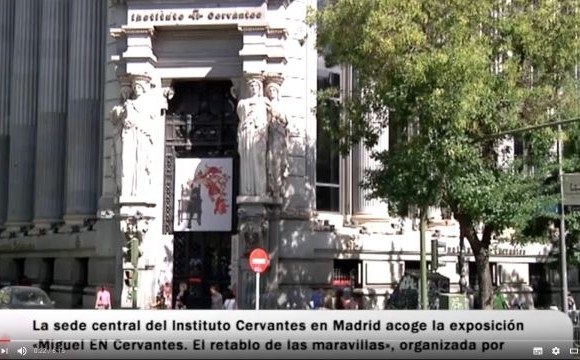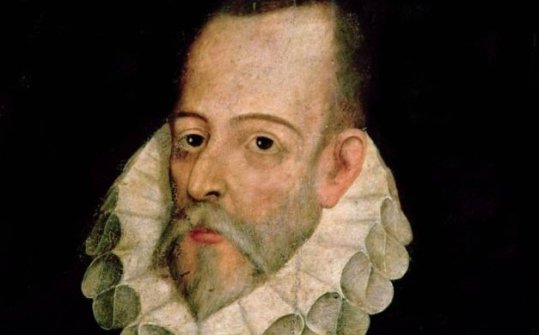Cervantes’ El Retablo de las Maravillas is a perfect example of the entremés in Spanish Golden Age theatre: a short one-act play designed to be performed between the acts of a longer play, jocular and satirical with a great deal of noise and bustle. The subjects addressed by this entremés are universal (love, the family, education, social status, religion, work) and in the Miguel EN Cervantes project they are related to moments in Cervantes’ life that embody the same themes in order to shed light on the fascinating and unknown Cervantes for both readers of the comic and visitors to the exhibition. It surveys the life and oeuvre of a man who lived in the fifteenth and sixteenth centuries but whose approach to life can be applied to the present and can be seen to represent modern values with which visitors identify. It is a journey into the past to show the modern-day relevance of Cervantes and his oeuvre.
Contributors to the comic are illustrators David Rubín, whose aesthetic accentuates the fictitious aspects for the part on El Retablo de las Maravillas, and Miguelantxo Prado, a more realistic draughtsman, for Cervantes’s biography. Both respect the historical component in their illustrations.
The story of El Retablo de las Maravillas is a version of an oriental tale that had several adaptations in the West, ranging from one of the tales in El conde Lucanor (De lo que contesció a un rey con los burladores que ficieron el paño) (trans. Count Lucanor; of the Fifty Pleasant Stories of Patronio) to The Emperor’s New Clothes compiled by Hans Christian Andersen. In Cervantes’s El Retablo de las maravillas, some rogues (Chanfalla, the owner of a puppet theatre and his female companion Chirinos) go to a village planning to give an unusual performance. The puppet show in question will have the particular feature that it is not visible to children born out of wedlock or by people of impure blood (that is, those who were not old Christians and were of Moorish or Jewish descent, according to the laws on purity of bloodline of the day). The viewer, aware that they are swindling those attending the show, including the authorities, is amused by this criticism of customs. The piece ends with the arrival of a military officer who demands the municipal authorities for lodging for his exhausted soldiers. As he is unaware of the supposed power of the puppet show he has no qualms about saying that he cannot see anything. The victims of the tricksters begin to make fun of him, he gets angry, and they come to blows at the end of the entremés.

.jpg&w=630&h=390)






